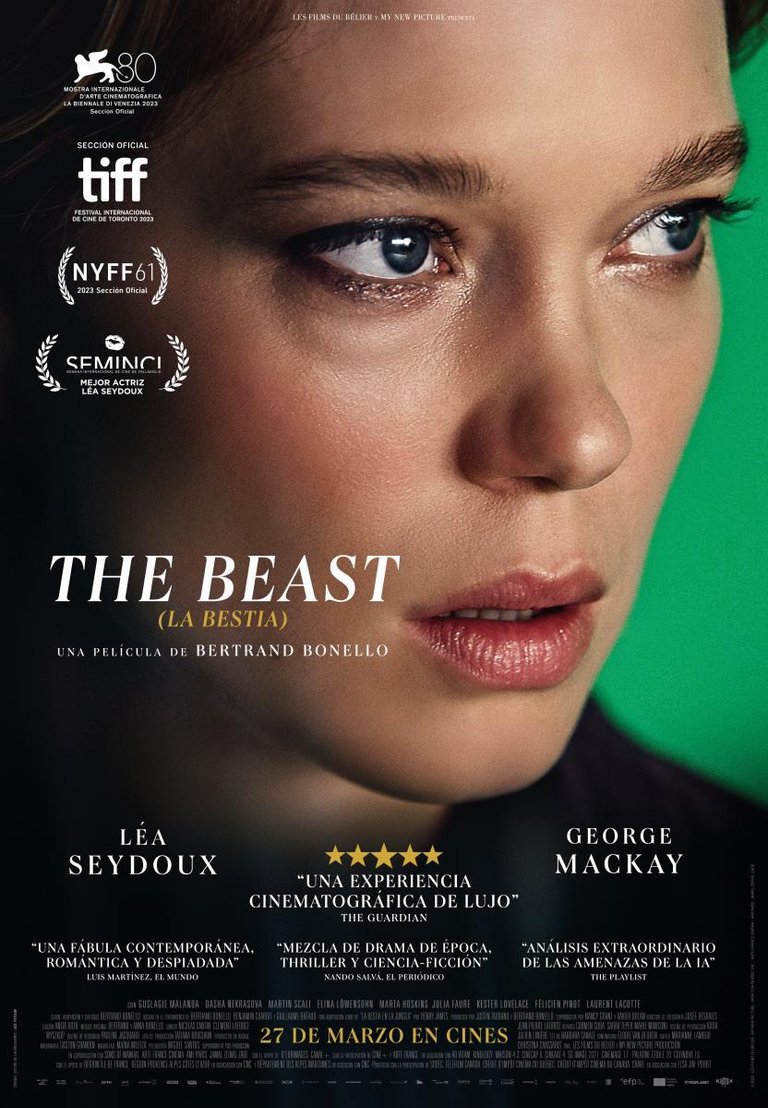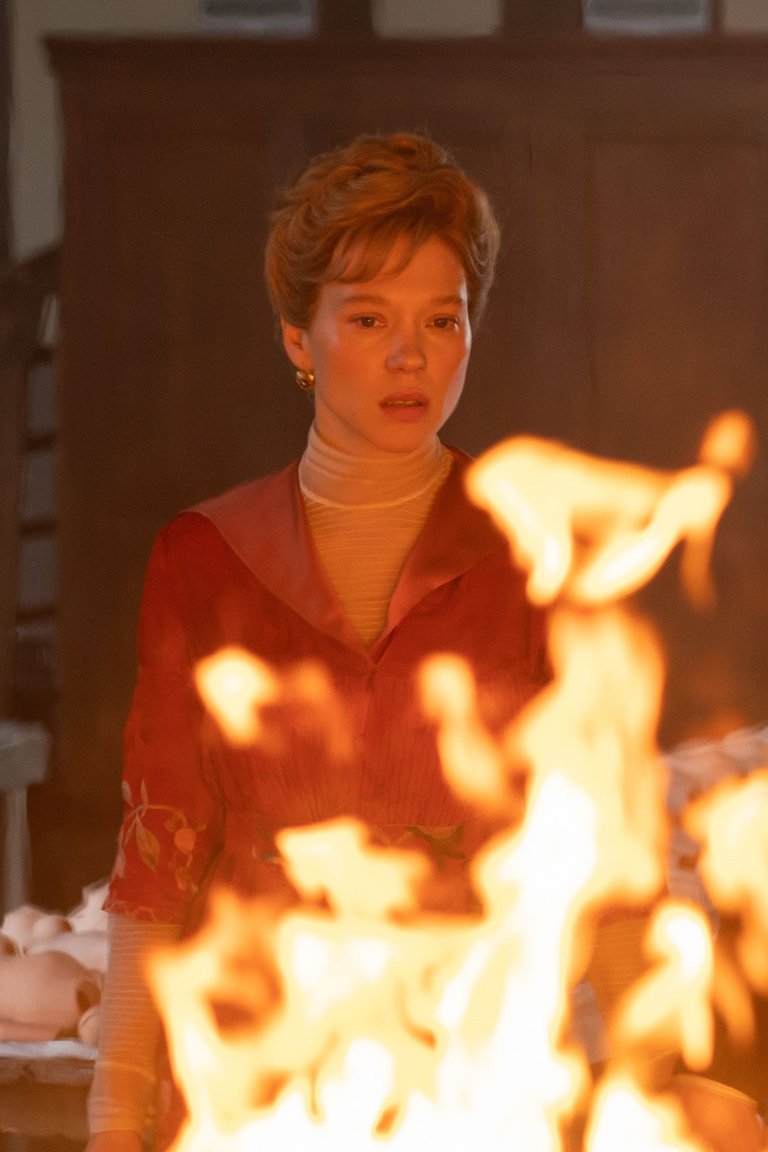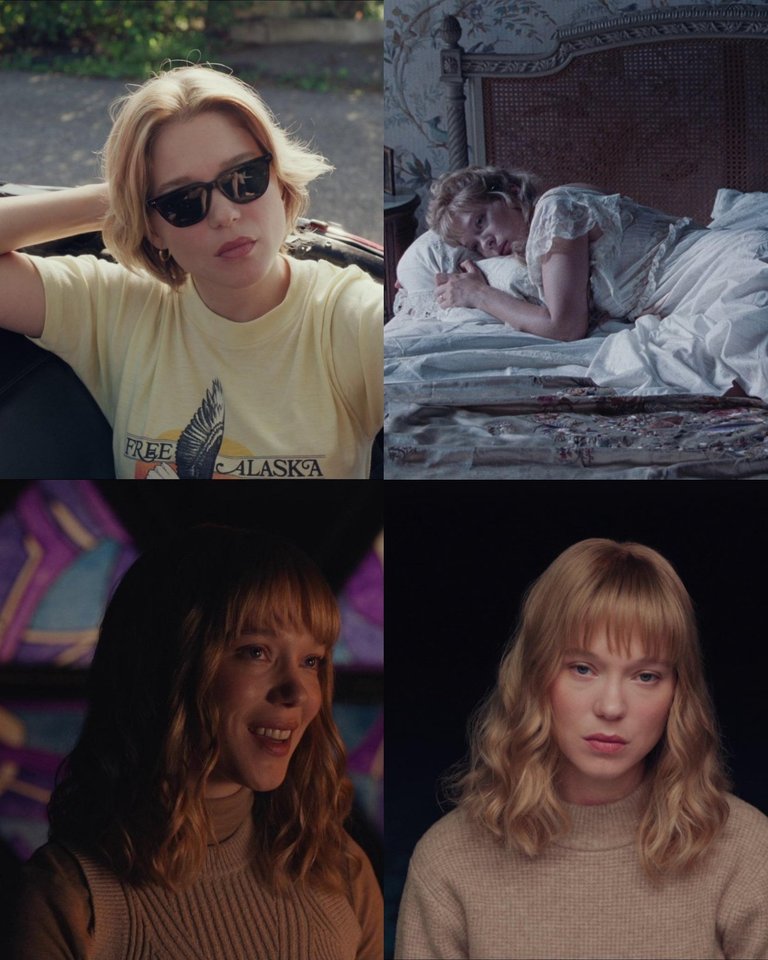The Beast (2024): once is not enough | una vez no basta
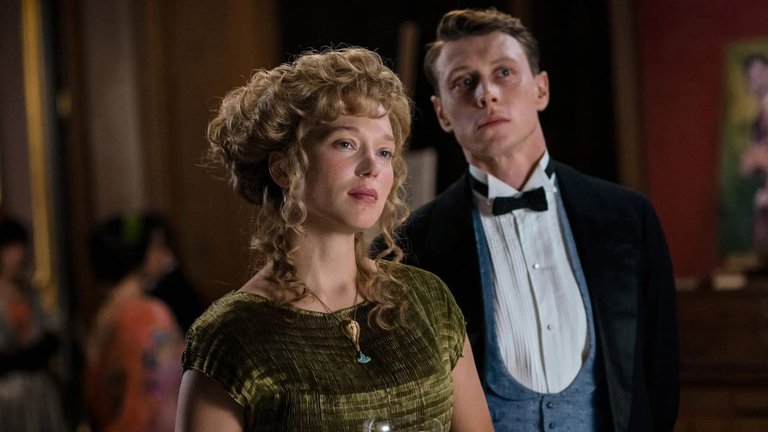
¿Me recordarías si me hubieras amado en una vida anterior?
For months I had been waiting to see Joker: Folie à Deux and The Substance and soon another highly anticipated film will hit the theaters, Gladiator II, but in the midst of those titles that have been attracting attention for at least six months before the premiere - and sometimes longer - titles emerge that give something to talk about, that sneak into conversations between people and that make one want to go to the movies, perhaps because of that promise of showing something different to the majority.
Desde hacía meses esperaba ver Joker: Folie à Deux y The Substance y dentro de poco llegará a las carteleras otra película muy esperada por todos, Gladiator II, pero en medio de esos títulos que acaparan la atención desde al menos seis meses antes del estreno - y a veces más tiempo - van surgiendo títulos que dan de qué hablar, que se van colando en las conversaciones entre personas y que hacen que a uno le den ganas de ir al cine, tal vez por esa promesa de mostrar algo diferente a la mayoría.
The first time I heard something about The Beast was less than a month ago and then I only saw the poster with Léa Seydoux's face on a billboard, but I didn't look for the trailer or know what the movie was about. Shortly after I heard several people recommending it to others and I didn't want to hear anything about the plot as such, until I finally went to a movie theater last Friday to see it. It's a story written and directed by Bertrand Bonello, loosely based on a novel Henry James titled The Beast in the Jungle. Although the film retains the presence of that beast in the title and in the plot, there are just a few similarities between both stories (but there are some common themes). In an interesting mix of drama, romance, science fiction, dystopia and thriller, The Beast begins in the middle of the 21st century, in a future to which we are getting closer and closer, where artificial intelligence seems to be the norm and human emotions a hindrance. The maximum aspiration of a person is to remain impassive in the face of life, to not let anything affect them, to not feel despair, anguish, or any overly effusive emotion. To the extent that these emotional outbursts are controlled or suppressed, one is more in tune with one's environment and achieves a calmer and smoother life in society. And in the middle of that world lives Gabrielle (Seydoux) who, like so many others, undergoes an alteration of her DNA to purify herself and achieve that state of permanent imperturbability.
La primera vez que escuché algo de The Beast fue hace menos de un mes y entonces sólo vi el poster con el rostro de Léa Seydoux en una cartelera, pero no busqué el trailer ni sabía de qué trataba la película. Poco después escuché a varias personas recomendándola a otros y tampoco quise escuchar nada de la trama como tal, hasta que finalmente acudí el viernes pasado a una sala de cine para verla. Se trata de una historia escrita y dirigida por Bertrand Bonello, basada ligeramente en una novella Henry James titulada The Beast in the Jungle. Si bien la película conserva la presencia de esa bestia en el título y en la trama, pocas son las similitudes entre ambas historias (pero sí hay algunos temas comunes). En una interesante mezcla de drama, romance, ciencia ficción, distopía y thriller, The Beast arranca a mediados del siglo XXI, en un futuro al que nos acercamos cada vez más, en donde la inteligencia artificial parece ser la norma y las emociones humanas un estorbo. La aspiración máxima de una persona es lograr mantenerse impasible ante la vida, que nada le afecte, no sentir desesperación, angustia, ni ninguna emoción demasiado efusiva. En la medida en que se logran controlar o suprimir esos arrebatos emocionales, se está más en sintonía con el entorno y se alcanza una vida en sociedad más tranquila y sin sobresaltos. Y en medio de ese mundo vive Gabrielle (Seydoux) quien, como tantos otros, se somete a una alteración de su ADN para purificarse y alcanzar ese estado de imperturbabilidad permanente.
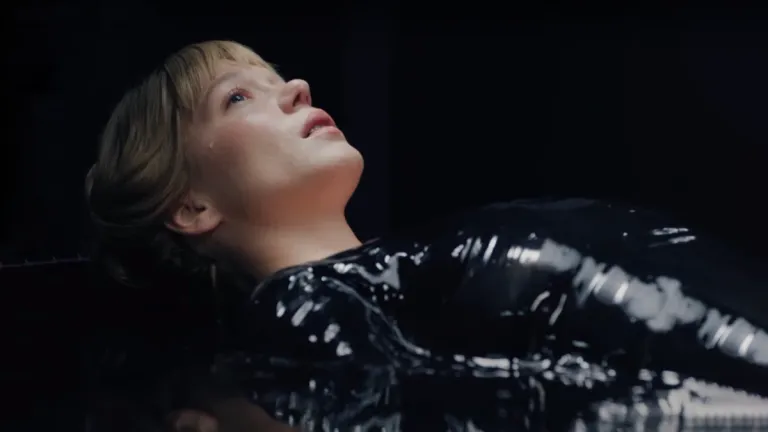
Part of this purification process is related to the young woman's past lives and that's why we see trailers or scenes from the film set in different times. The first story, the present time we would say, takes place in the year 2044, but there are two other previous stories, one closer to us that takes place in 2014 and the other, older, that takes place in 1910 and which is the the one that bears greater similarities to Henry James' novella.
Parte de ese proceso de purificación está relacionado con las vidas pasadas de la joven y por eso es que vemos avances o escenas de la película ambientados en diferentes épocas. La primera historia, el tiempo presente diríamos, se desarrolla en el año 2044, pero hay otras dos historias anteriores, una más cercana a nosotros que se desarrolla en el 2014 y la otra, más antigua, que se desarrolla en 1910 y que es la que guarda mayores similitudes con la novella de Henry James.
The interesting thing is that they don't explain this like this. The film opens with Gabrielle - before we know her name - in front of a green screen filming a scene; shortly after we see her inside a futuristic room (an office? a spaceship?) and a few minutes later we see her in a loose dress from the late 19th century walking from one room to another looking for her husband. The stories alternate in no particular order, but they hint at some things that relate them and that - although we still don't know the exact way in which they are connected - we know that they have something to do with each other, how do we know? First, because there are certain parallels, elements that are repeated from one story to another, such as the existence of a body of water, the presence of a doll, the intervention of a fortune teller who communicates threatening omens, the shadow of death and certain animals that behave similarly. And the other reason we immediately sense a connection is because in each of these stories someone else besides Gabrielle is present: a man named Louis, played by George MacKay. Is this a past life story then? Yeah, and wasn't it supposed to be a dystopian sci-fi movie? Yes, it is too, but what about the romance part? It also has a lot. Let's say that the mix is quite particular, as if each of the intersecting stories covered only some of these topics that, combined, produce the effect of being a very challenging, but equally attractive work.
Lo interesante es que esto no lo explican así. La película inicia con Gabrielle - antes de que sepamos cómo se llama - frente a una pantalla verde grabando una escena; poco después la vemos dentro de una habitación futurista (¿una oficina? ¿una nave espacial?) y unos minutos más tarde la vemos en un vestido amplio de finales del siglo XIX caminando de un salón a otro buscando a su marido. Las historias se van alternando sin ningún orden en particular, pero van dejando entrever algunas cosas que las relacionan y que - aunque aún no sepamos la forma exacta en que se conectan - sabemos que algo tienen que ver, ¿cómo lo sabemos? Primero porque hay ciertos paralelismos, elementos que se repiten de una historia a otra, como la existencia de un cuerpo de agua, la presencia de una muñeca, la intervención de una adivina que comunica augurios amenazantes, la sombra de la muerte y ciertos animales que se comportan de manera similar. Y la otra razón por la que inmediatamente intuimos una conexión es porque en cada una de estas historias está presente otra persona además de Gabrielle: un hombre llamado Louis, interpretado por George MacKay, ¿se trata de una historia de vidas pasadas entonces? Sí, ¿y no se suponía que era una película de ciencia ficción distópica? Sí, también lo es, ¿pero y la parte del romance? También tiene y mucho. Digamos que la mezcla es bastante particular, como si cada una de las historias que se entrecruzan abarcaran sólo algunos de estos tópicos que, combinados, producen el efecto de ser una obra muy desafiante, pero igual de atrayente.

The history of the early 20th century is very romantic, it has the period dresses, the palaces, the customs of those times, the language and the beauty of the colors and textures. The one from the beginning of the 21st century has something of the culture of the superficial, that cult of beauty and youth, the violence typical of the late 20th century and a more neutral aesthetic, but it's also the part of the film that is transformed little by little into a psychological thriller. And finally, the story that takes place in 2044, that dystopia that points to the disappearance of human emotions, is the one that activates the plot, the one that originates everything and the one that draws our attention the most because of the technology that we see used, the almost empty streets (where is everyone?) and the masks people wear outdoors (what happened to oxygen?).
La historia de principios del siglo XX es muy romántica, tiene los vestidos de época, los palacios, las costumbres de esos tiempos, el lenguaje y la belleza de los colores y las texturas. La de princpios del siglo XXI tiene algo de la cultura de lo superficial, ese culto a la belleza y a la juventud, la violencia propia de finales del siglo XX y una estética más neutra, pero es también la parte de la película que se va transformando poco a poco en un thriller psicológico. Y finalmente, la historia que transcurre en el 2044, esa distopía que apunta a la desaparición de las emociones humanas, es la que activa la trama, la que origina todo y la que más nos llama la atención por la tecnología que vemos emplear, las calles casi vacías (¿en dónde están todos?) y las máscaras que usan las personas al aire libre (¿qué le ocurrió al oxígeno?).
Editing the film chronologically would have made it more understandable, but it would have taken away from the fun. The spectator's challenge is to retain the details, make the connections, identify those dialogues that respond to other dialogues from a different time, seeing what elements are repeated from one story to another, but by the time one begins to understand many things, one already has forgotten some details or maybe missed some things that were important and had no way of knowing they were, how can I find what I'm looking for if I don't even know what it looks like? That's why I think it's a movie to see at least twice, because even if you understood it - in general - the first time, it's on the second viewing, when you already know how it ends, when you can pay more attention to the details and judge how well constructed the film is from the beginning. There are scenes of great visual beauty, others with great symbolic load, some very emotional scenes, a good soundtrack, wonderful performances, especially from the protagonist duo, a great editing and a lot of courage on the part of a director who decided to tell this story in a different way, with that daring narrative structure that doesn't underestimate the viewer and believes that they will be able to access that labyrinth of emotions. It's true that it's not a film accessible to everyone, at least not at first glance, but I do believe that, by paying enough attention to the details, almost any film lover can understand and, above all, enjoy The Beast, how many of you have already seen it? I read you in the comments.
Haber montado la película de manera cronológica la habría hecho más comprensible, pero le habría quitado la diversión. El desafío del espectador es ir reteniendo los detalles, haciendo las conexiones, identificando esos diálogos que responden a otros diálogos de una época distinta, viendo qué elementos se repiten de una historia a otra, pero para cuando uno comienza a entender muchas cosas, ya se te han olvidado algunos detalles o tal vez dejaste pasar algunas cosas que eran importantes y que no tenías la forma de saber que lo eran, ¿cómo puedo encontrar lo que busco si ni siquiera sé cómo luce? Por eso creo que es una película para ver al menos dos veces, porque aunque la hayas entendido - de forma general - a la primera, es a la segunda vista, cuando ya sabes cómo termina, cuando puedes prestar más atención a los detalles y juzgar lo bien construida que está la película desde el inicio. Hay escenas de gran belleza visual, otras con gran carga simbólica, algunas escenas muy emotivas, un buen soundtrack, maravillosas actuaciones, sobre todo de la dupla protagonista, un gran montaje y mucho valor de parte de un director que decidió contar esta historia de una forma diferente, con esa atrevida estructura narrativa que no subestima al espectador y cree en que podrá acceder a ese laberinto de emociones. Es cierto que no es una película accesible para todos, al menos no a primera vista, pero sí creo que, prestando bastante atención a los detalles, casi cualquier amante del cine puede llegar a entender y sobre todo a disfrutar de The Beast, ¿cuántos de ustedes ya la han visto? Los leo en los comentarios.
Reseñado por @cristiancaicedo
Other posts that may interest you | Otros posts que pueden interesarte:
 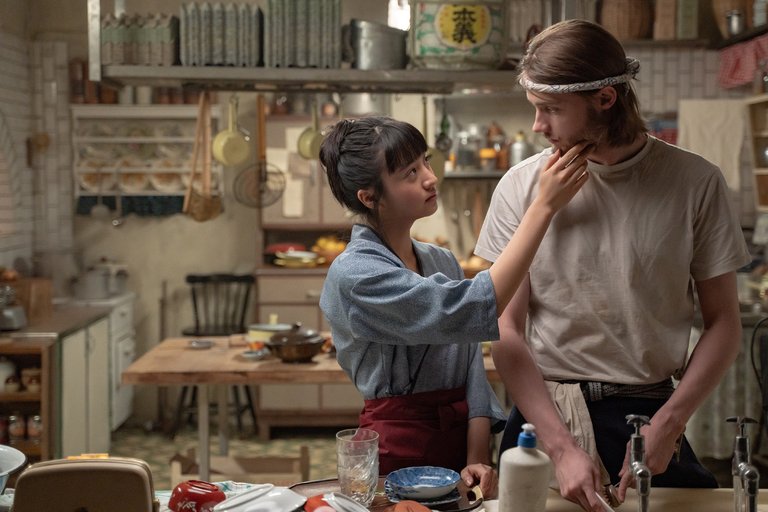  |
|---|
